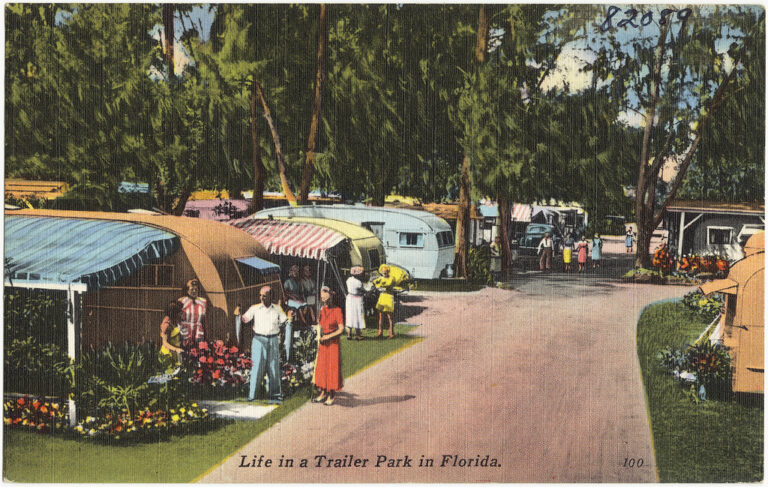Physical Address
304 North Cardinal St.
Dorchester Center, MA 02124
Physical Address
304 North Cardinal St.
Dorchester Center, MA 02124

Inclusionary Zoning is an Oxymoron The term “Inclusionary Zoning” gives a nod to the fact that zoning is inherently exclusionary, but pretends to be somehow different. Given that, by definition, zoning is exclusionary, Inclusionary Zoning completely within the exclusionary paradigm is synonymous with Inclusionary Exclusion. What is Inclusionary Zoning? “Inclusionary Zoning” is a policy requiring a certain percentage of units in new developments to be affordable to certain income groups. Sometimes, this includes a slight loosening of restrictions on the overall scale of the development, but rarely enough loosening to overcome the burden of subsidizing units. Many cities, particularly the most expensive ones, have adopted Inclusionary Zoning as a strategy intended to improve housing affordability. Often, demand for below-market units are so high, one must literally win a lottery to obtain a developer-subsidized unit. Economics of Exclusion We must first acknowledge the purpose of zoning is to EXCLUDE certain people and/or businesses from an area. Zoning does this by limiting how buildings are used within a district, as well as limiting the scale of buildings . These restriction cap the supply of built real estate space in an area. As we know from microeconomics, when rising demand runs into this artificially created upward limit on supply, prices rise to make up the difference. As every district in a region competes to be more exclusive than its neighbors through the abuse of zoning, regional prices rise in the aggregate. Since the invention of the automobile, and subsequent government overspending on highways, sprawl has served as the relief valve. We’ve built out instead of up for the last several decades and this sprawl has relieved some of the pressure major metropolitan areas would have otherwise felt. In fact, it’s worked so well–and led to the abuse of zoning rules for such a long time–that exclusionary zoning has become the accepted paradigm. Zoning is the default flavor of […]
One common argument I have read in various places is that the high rent of New York and other large cities is a result of globalization and inequality (English translation: rich foreigners). According to this theory, rich people have created a surge of demand so overwhelming that no amount of construction could possibly meet it. It seems that if this argument were true, rent would be growing most rapidly in rich neighborhoods full of super-expensive skyscrapers, such as New York’s Upper East and West Sides. This week, NYU’s Furman Center helpfully came out with its latest report on housing in New York City. Page 6 of the report reveals that between 1990 and 2014, rent in the Upper East Side rose by 23 percent- about the same as the citywide average. Upper West Side rent rose by 38 percent- more than the citywide average, but less than ten of the city’s 50-odd other neighborhood clusters, including not only hipstery Greenpoint, but also not-so-nice areas like East Harlem. So this bit of data, although not conclusive, seems inconsistent with the “rich foreigners” theory.

LA rent sucks. It’s way, way too damn high. Let’s fix it. If you rent, you’re probably already on board. You gotta pay the man on the 1st of the month, every month, and that sucks. But what if you are the man? You’ve got the sweet house, the trophy husband, the picket fence. Even then, you should still be upset. Here’s why this matters, to everybody: High housing costs are hamstringing the whole American economy. To the tune of a TRILLION dollars a year. $3,000 for every man, woman, and child. Short and sweet – the places where the rents are too damn high tend to be places where people are more productive and can make a lot of money (think entertainment in LA, tech in SF, or finance in NYC). But because the cost of living is so high in those places, lots of people choose to move to places where it is cheap instead. If we drove rents down, and people started moving to where the best jobs are, the US economy would grow by $1-2 trillion a year. That’s more money for you, more money for me, and more money for Uncle Sam. High rents are trapping us in our cars, breaking up families, and literally driving us into obesity and early death. Remember those high-paying jobs in our most productive cities? Well some people want them even though they can’t afford to live near them. So they drive, and they drive far. And when more people drive, and the farther we drive, the more cars there are on the road (cars on road = # of people driving x distance they drive). Then we’re all stuck in traffic. Sitting in our damn cars for hours in traffic makes us fat, gives us less time at […]
Emily Washington recently wrote for Market Urbanism about the need for low quality housing, attributing some of the high cost of housing in U.S. cities to building codes that increase construction costs. Some provisions of building codes were encouraged by social reformers and reflect middle-class standards and expectations, rather than necessities of health and safety. Over at Rooflines, Jamaal Green responds that there is no shortage of low quality housing in the U.S. Anyone with a cursory familiarity with the lower end of the U.S. housing market can vouch for the fact that there are many dwellings out there, in cheap cities and expensive ones alike, that are very low quality in their ability to provide shelter, keep out pests, supply functioning water and sewer connections, and so on. Part of the issue here is that quality can be used to convey a wide variety of characteristics. Something can be low quality in the sense that it is hazardous to human health and safety, or something can be low quality in the sense that, while functional, it doesn’t meet the aesthetic preferences of the neighbors. As Paul Groth details in Living Downtown: The History of Residential Hotels in the United States, it is clear that many zoning and building code provisions reflect the middle-class sensibilities of Progressive Era reformers. In particular, living arrangements that were not centered on family life, such as residential hotels and rooming houses, were nearly driven out of existence. Unlike the lower end single-room cubicles of Groth and the doss houses of Jacob Riis, this was not due to public health, but to the perceived impact on social relations of residents. Turn of the century hotels and rooming houses made it possible for women to live alone and for both men and women to engage in intimate relationships, straight […]
There are two political movements in urban development that have a lot of overlap but are not the same. ‘New Urbanism’ advocates the legalization and building of communities resembling the 19th century American town, with a fair number of single family homes [or maybe ‘single family’ with granny flats], row houses, and clumps of apartments, close enough to commercial places to be walkable, and diverse in terms of income, hopefully without subsidy. Smart Growth, on the other hand, goes farther and advocates the forbidding of building that is not either New Urbanist or denser, sometimes even high-rise; and also any building at all outside a ‘growth boundary’. It is a fact that perhaps 90% of New Urbanists are also Smart Growthers, though many of the leaders of the New Urbanist movement are not; that still does not mean the two philosophies are identical. Smart Growth, in fact, finds itself an ally in many areas of No Growth, which is not the same as Smart Growth either, but is quite popular in the suburbs as people desire to conserve the values that brought themselves to the suburbs in the first place, and not have the value of their investments diluted by ‘printing’ new housing, as the value of our money is diluted by ‘printing’ money. A disproportionate number of Jewish people are ‘progressives’ and ‘socialists’ for very historical reasons, for example, but that does not mean that Judaism and progressivism are the same. And there is a lot of overlap between conservatism and evangelical Christianity, but the two are not the same either. Overlap does not, and must not, mean identity. I will admit that, though the single family suburban house was favored for many years by government policy, nevertheless it is what many people, including especially families with children, desire; […]
Michael Hamilton and I coauthored this post. Tyler Cowen has two new, self-recommending posts questioning whether or not market urbanist arguments are internally consistent. He argues that if land-use regulations are analogous to a tax on land, then either the benefits of deregulation would go to landowners or the costs of regulation are greatly overstated. The problem with this argument is that zoning is not a Georgist tax in which landowners are taxed in proportion to their land’s value; rather, zoning hugely decreases the value of the country’s most valuable land, while it props up the value of land that would be less desirable absent zoning. This is because zoning only acts as a tax on land to the extent that regulations are actually binding. A 250-foot height limit would create zero costs for the vast majority of the country, but would be devastating in Manhattan. Likewise, the large variation in land-use regulations across localities means that the costs of land-use regulation are imposed unevenly, even though there may be some correlation between land value and the tax imposed by zoning. Their repeal would have complicated and mixed effects. Tyler’s post focuses on desirable neighborhoods within the nation’s most highly-demanded cities because it assumes large increases in Ricardian rents from liberalization, i.e. those places where zoning is often the most binding. A broader view would also consider what would happen outside hip neighborhoods, especially exurban commuter suburbs that mostly exist because workers are excluded from areas closer to city centers. These suburbs could see land values plummet under broad liberalization. Whether these price changes are good or bad is a value judgement, but Tyler’s theoretical distributional concerns should also take potential decreases in land value into account. Empirically, cities with more liberal land-use regimes are more affordable, so the premise of zoning being analogous to a land value tax may not be accurate. Toronto, Houston, Chicago, and […]

Given that “redneck” and “hillbilly” remain the last acceptable stereotypes among polite society, it isn’t surprising that the stereotypical urban home of poor, recently rural whites remains an object of scorn. The mere mention of a trailer park conjures images of criminals in wifebeaters, moldy mattresses thrown awry, and Confederate flags. As with most social phenomena, there is a much more interesting reality behind this crass cliché. Trailer parks remain one of the last forms of housing in US cities provided by the market explicitly for low-income residents. Better still, they offer a working example of traditional urban design elements and private governance. Any discussion of trailer parks should start with the fact that most forms of low-income housing have been criminalized in nearly every major US city. Beginning in the 1920s, urban policymakers and planners started banning what they deemed as low-quality housing, including boarding houses, residential hotels, and low-quality apartments. Meanwhile, on the outer edges of many cities, urban policymakers undertook a policy of “mass eviction and demolition” of low-quality housing. Policymakers established bans on suburban shantytowns and self-built housing. In knocking out the bottom rung of urbanization, this ended the natural “filtering up” of cities as they expanded outward, replaced as we now know by static subdivisions of middle-class, single-family houses. The Housing Act of 1937 formalized this war on “slums” at the federal level and by the 1960s much of the emergent low-income urbanism in and around many U.S. cities was eliminated. In light of the United States’ century-long war on low-income housing, it’s something of a miracle that trailer parks survive. With an aftermarket trailer, trailer payments and park rent combined average around the remarkably low rents of $300 to $500. Even the typical new manufactured home, with combined trailer payments and park rent, costs […]
Several cities have jumped on the bandwagon of building Micro-apartments, a hot trend in apartment development. San Francisco and Seattle already have them. New York outlawed them, but is testing them on one project, and may legalize them again. Even developers in smaller cities like Denver and Grand Rapids are taking a shot at micro-apartments. At the same time, Chicago is building lots of apartments, and is known for having low barriers to entry for downtown development. Yet we aren’t hearing of much new construction of micro-apartments here. Premier studios are fetching as much as $2,000 a month. Certainly there must be demand for something more approachable to young professionals. In theory, we should expect to see Chicago leading the way in innovative small spaces. Chicago doesn’t have an outright ban on small apartments like New York, but there are four regulatory obstacles in the Chicago zoning code. These are outdated remnants from eras where excluding undesirable people were main objectives of zoning, and combined to effectively prohibit small apartments: 1. Minimum Average Size: Interestingly, there is no explicit prohibition of small units. This is unlike New York City’s zoning, which prohibits units smaller than 400sf. There is, however, a stipulation that the average gross size of apartments constructed within a development be greater that 500sf. Assuming 15% of your floor-plate is taken by hallways, lobbies, stairs, etc; this means for every 300sf unit, you need one 550sf unit to balance it out. Source: 17-2-0312 for residential; 17-4-0408 for downtown 2. Limits on “Efficiency Units”: Zoning stipulates a minimum percentage of “efficiency units” within a development. The highest density areas downtown allow as much as 50%, but these are the most expensive areas where land is most expensive. In areas traditionally more affordable, the ratio is as low as 20% to discourage studios, and encourage […]
Hovering somewhere just beyond all the land use zoning regulations, building codes, finance mechanisms, aspirational comprehensive municipal plans, state mandates, and endless NIMBYism lies… reality. If you happen to want to live in certain parts of coastal California you need to come to grips with a serious supply and demand imbalance. Demand is endless. Supply is highly constrained. And there’s a huge amount of money on the table. Horizontal growth is essentially verboten. A powerful coalition of existing property owners, environmental groups, resource allocation schemes, and multi-tiered government regulations stymie new greenfield development. The personal interests of conservative Republicans and liberal Democrats line up exactly when anyone attempts to build anything near them. “Over my dead body.” It’s understood that if a town accepts endless low density horizontal development the overall quality of the area will decline. You can’t have expansive large scale suburbia without paving over the countryside, creating a great deal of traffic congestion, and inducing strip mall blight. At the same time, no one wants infill development on existing not-so-great property that’s already been paved over and degraded. The neighborhood associations break out the pitch forks and firebrands at the suggestion of multi-story condos or (Heaven forbid) apartment buildings. The population of any older suburb could double or triple without using a single inch of new greenfield land. But that kind of growth is feared and hated. So the aging muffler shops and parking lots linger in the middle of a massive housing crisis. Google Google Google On the other hand there’s radically less regulatory or community push back against expanding and improving existing suburban homes. Google Street View makes it possible to observe how a little post war tract home was transformed into a substantially larger residence. This kind of growth is entirely acceptable. The building […]
I have criticized the idea that the law of supply and demand no longer applies to big-city housing (or, as I call it, supply-and-demand denialism, or “SDD” for short). It just occurred to me that there are a few similarities between supply-and-demand denialists and those who deny climate change. To name a few: *Rejection of science. Climate change denialists reject climate science; SDD true believers reject economics. *Paranoid fantasies about foreigners. Some climate change denialists treat worldwide concern over climate change as a conspiracy by Europeans or Chinese to destroy the U.S. economy; SDD believers are obsessed with foreigners purchasing U.S. or Canadian real estate. *Obsessive fear of change. Climate change denialists assume that any possible limit on fossil fuel emissions will destroy the U.S. economy (despite the fact that we already have lots of taxes and regulations and somehow maintain a more-or-less First World standard of living). I suspect (though I realize this is conjecture) that SDD believers are often NIMBYs who fear, without any obvious basis in reality, that new housing will turn their neighborhood into a slum or into a playground for the rich. *Self-interest generating these fears. Climate change denialists get information from politicians funded by the fossil fuel industry (and media outlets that support those politicians), which has a strong interest in limiting regulation of fossil fuel pollution. NIMBYs are sometimes homeowners who have a financial interest in limiting new housing in order to keep prices and rents high, or housing activists who can more effectively argue for government-subsidized housing if housing prices are high.